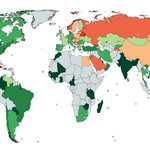https://twitter.com/treugolny_hui/status/1058812850314117122
"Марксистам почему-то очень не нравится предложение обобществить их квартиру, машину и жену, согласно Манифесту коммунистической партии. Видимо мешают еще частно-собственнические атавистические инстинкты, мало работают надо собой."
https://pbs.twimg.com/media/DrIH9kLU4AEOefl.jpg:orig
УНЯНЯ. У нас есть немножечко инфы
об этом пользователе. Мы знаем, что он понаписал,
порекомендовал и даже и то и другое сразу.
А ещё у нас есть RSS.
https://epik.com/blog/why-epik-welcomed-gab-com.html
"The domain Gab.com has landed at Epik.
This post will summarize why Epik welcomed Gab.com. It will also address why I believe the operators of the site have the right to be online.
For those not familiar with the case, Gab.com’s ability to operate was abruptly terminated by Godaddy, among other vendors, who deemed Gab to have violated their terms of service. This de-platforming of Gab generated much discussion in the mainstream technology press. It also prompted a lively discussion in the professional domain name community, including at the popular discussion board NamePros.
As the news broke, and as some elements in the mainstream media rendered their judgement, I embarked on my own search for truth. Along the way, I did have an opportunity to meet with the Founder of Gab, Andrew Torba, an entrepreneur who was willing to swim against the tide for what he believes is right, namely empowering netizens to discuss openly about matters of mutual interest with limited risk of censorship.
Although, I did not take the decision lightly to accept this domain registration, I look forward to partnering with a young, and once brash, CEO who is courageously doing something that looks useful. As I reflect on my own journey as a truth-seeking tech entrepreneur, I have no doubt that Andrew will continue to develop not only as tech entrepreneur but also as a responsible steward — one that can balance bravado with diplomacy and who tempers courage with humility..."
Степень прихода к коммунизму, %: https://pbs.twimg.com/media/DrGTXS0XQAEyhh-.jpg:orig
https://twitter.com/ppsd_mn2t/status/1058792610779856896
Очередная победа феминизма: https://www.breitbart.com/politics/2018/11/02/brett-kavanaugh-rape-accuser-admits-she-made-up-her-story-doj-fbi/
"Brett Kavanaugh Rape Accuser Admits She Made Up Her Story
The Senate Judiciary Committee has referred a Kentucky woman to the Department of Justice (DOJ) and the Federal Bureau of Investigation (FBI) after she admitted making up an accusation that U.S. Supreme Court Justice Brett Kavanaugh had raped her.
According to the referral, the woman, Judy Munro-Leighton, contacted the Senate Judiciary Committee regarding a letter presented by Sen. Kamala Harris (D-CA) from “Jane Doe” of Oceanside, California, who claimed that Kavanaugh had raped her “several times.” As Breitbart News reported last month:
According to committee transcripts released Sunday, the accuser, who signed the mysterious letter as “Jane Doe,” alleges Kavanaugh and a friend raped her “several times” after giving her a lift home from a party — making no attempt to claim a time or place for the lurid story.
The accuser claims Kavanaugh groped her, slapped her, and force her to perform sexual acts. “They forced me to go into the backseat and took 2 turns raping me several times each. They dropped me off 3 two blocks from my home,” the accuser wrote, claiming the pair told her, “No one will believe if you tell. Be a good girl.”
The letter, marked with the word “urgent,” did not include a return address, nor did it offer clues regarding the accuser’s background. “A group of white men, powerful senators who won’t believe me, will come after me” if I reveal the incident, the accuser wrote, prompting observers to speculate the sender could be a minority.
Munro-Leighton contacted the committee via e-mail, claiming that she was “Jane Doe” and that Kavanaugh had raped her. However, she later admitted that she was not “Jane Doe” and had never met Kavanaugh..."
http://teatr-aktor.kiev.ua/7_rozgnivanyh_gentlmeniv
"«Скільки хороших чоловіків опинилося під мостом через жінку» Чарлз Буковскі
Жінки... Причини світових конфліктів і геополітичних змін ще з часів Троянської війни. Жіноча стать завжди була основним рушієм історії, бо найбільші дурниці чоловіки роблять через кохання та пристрасть до слабкої статі. Але без них існування людства було б неможливим.
«Сім розгніваних джентльменів» — антифеміністична комедія, в якій у нареченого з незрозумілих причин зривається весілля, і всі гості вирушають на пошуки справедливості.
Сім брутальних чуваків, сигари, костюми, віскі, пістолет, відбірна лайка, бійка, заручник і відверті розмови про секс. Та, як буває у голлівудських комедіях, усе закінчиться хепі-ендом."
Родина тебя бросит и забудет, сынок. Всегда: https://twitter.com/romanpopkov1/status/1058421082020085762
"Великолепное интернет-издание "Взгляд" спешно зачистило все статьи военного эксперта Неелова после того как его арестовало ФСБ. Вот скрин списка статей."
https://pbs.twimg.com/media/DrBEVtOXgAI3nGf.jpg:orig
"Товарищ Путин, произошла ужасная ошибка": https://www.facebook.com/babchenkoa/videos/1591986627568231/
"По сети расходится это видео. Менты задерживают дедушку на вокзале в Мытищах. Полиция, сотрудники в штатском, дедушку валдохают и увозят на тележке. Адский ад. Ну, всё как у них принято.
Ну и все, конечно - ах, сволочи, проклятые менты, дедушку мучают.
Ну, да, сволочи. Ну, да, Мордор. Ну, да, проклятые менты.
Одно только "но".
Дедушка - сам в милицейском кителе. Судя по погонам - особо не рассматривал, но вроде как майор милиции.
Ну и полный набор прочего "дедовоевала" - какие-то значки, колорадка, "я до Берлина дошел", "фашисты!" и, судя по всему, Сталин в голове до самого неба.
Молодые менты пиздят старого мента.
Строил строил дедушка эту прекрасную систему, растил растил молодую поросль, и - черт возьми, как так вышло? - наконец вырастил! Взошла поросль молодая, сильная, красивая.
И, наконец, построили.
Кто бы мог подумать.
А потом новые ученики будут пиздить этих ментов, когда они станут старенькими, и нацепив все свои кителя и побрякушки за верную службу Родине, будут торговать калошами на вокзале, когда эта самая Родина их кинет. Всегда. Обязательно.
И тоже будут также орать про фашистов и про то, как они до Донецка дошли. А в голове будет великий Путин до седьмого неба, когда пломбир был вкусный.
Инфантилизм - это неспособность выстраивать логические цепочки. И понимать, что действие "А" приводит к результату "Б".
Эх, дедушка дедушка. Что ж ты так плохо работал. Упустил, недопересажал сомнительный элемент. Всех этих любителей БиБиСи и "Голоса Америки" недоотправил за сто первый километр. Пробрались, пробрались американские ставленники в нашу славную советскую милицию. И теперь издеваются над старыми кадрами.
Сообщите товарищу Абакумову. Произошла какая-то ошибка."
Внезапно актуальное: https://pbs.twimg.com/media/Dq_njLhX0AAZs4Q.jpg:orig
Tonari no Kyuuketsuki-san 05. Хозяйке на заметку! Урок мудрости от трёхсотлетнего вампира: https://i.juick.com/photos-1024/2925621.png
Тем временем про этого вашего петушария собрали досье: https://bewareofthem.org/propagandistsru/anatoly_shariy/ Как выясняется, я был прав во всём, что про него говорил. Не только я, конечно, его рашкопропанадистская сущность с самого начала была очевидна, но теперь там ещё и по куче пруфов на каждое обвинение. Конечно, фанатам в любом случае всё божья роса, но вдруг есть кто-то ещё не совсем деградировавший, кто теперь задумается?
https://twitter.com/msvetov/status/1057928740448206848
"Архангельский бомбист грозился меня повесить. Если бы у путинских было немного совести и мозгов, они бы хватались за люстрации как за спасительный билет. Потому что уже растут новые злые, которые никого не пощадят и таких щедрых предложений делать не будут."
https://fee.org/articles/how-free-trade-liberated-women-from-housework/
"How Free Trade Liberated Women from Housework
Chelsea Follett
US tariffs will thus target and raise the cost of appliances that have been key to women’s empowerment historically.
t is an underappreciated fact that women are hit particularly hard by the United States’ ever-increasing tariffs on imports and burgeoning trade war with China (and, possibly, other countries as well).
Recently another set of tariffs on imports took effect, raising prices on hundreds of goods especially important to women, including foodstuffs and appliances. It may sound trite—or worse—to associate these goods primarily with women. But economic history clearly shows that labor-saving appliances and ready-made food products save women time, thereby expanding their opportunities, and allowing them to improve their education and skills, pursue employment outside the home, and do other things they value.
The Market Freed up Women's Time
Consider just one appliance that the administration’s tariffs have hit especially hard: the washing machine. Just a century ago, women would spend at least one full day of their already overburdened week soaking, stirring, boiling, wringing, hanging, deodorizing, starching, and then folding and ironing their household laundry.
Today, the washing machine reduces the amount of weekly active work on laundry to around an hour. As University of Cambridge economist Ha-Joon Chang has noted, “Without the washing machine, the scale of change in the role of women in society and in family dynamics would not have been nearly as dramatic.” Yet the US recently placed a 25 percent tariff on Samsung and LG washing machines from South Korea and has tariffed the foreign steel and aluminum used in American-made washers. As a result, the price of these machines has already increased by 17 percent.
The new tariffs will increase the cost of countless goods that have freed women’s time and dramatically improved gender equality, helping make two-earner households possible. Consumers will see heftier price tags on vacuum cleaners, sewing machines, refrigerators, dishwashers, kitchen waste disposers, blenders, food processors, toaster ovens, microwaves, kitchen ranges and ovens, slow cookers, and virtually all other appliances. (The full list of products targeted by the latest tariffs is 194-pages-long.) The increase in cost will represent an abrupt change for the worse after global trade liberalization previously lowered the cost of many those same goods over the past decades.
Reducing the Burden of Housework
The tariffs will thus target and raise the cost of appliances that have been key to women’s empowerment historically. Thanks in part to the affordability of everyday kitchen appliances, cooking has changed from a necessary, labor-intensive task to a largely optional activity in the United States. Back in the days of churning butter and baking one’s own bread, food preparation consumed as much time as a full-time job. But by 2008, the average American spent around an hour on food preparation each day, and from the mid-1960s to 2008, women more than halved the amount of time spent on food preparation. Yet women still cook more than men in the United States, and so any increase in the cost of kitchen appliances is a tax on items that women use the most..."
Такую страну просрали: http://kolpino-city.ru/m/2/v-tosno-obnaruzhili-poslanie-iz-1937-goda/
"Необычный экспонат представил на выставке, посвященной 80-летию города Тосно, местный историко-краеведческий музей. Когда разбирали старый дом в районе железной дороги, рабочие обратили внимание на одну из досок пола. Она содержала целое послание.
Этот предмет долгое время находился в фондах музея, широкой публике его не показывали. ФОТО предоставлено Тосненским историко-краеведческим музеем
Надпись гласит (приводим в оригинальной орфографии): «Этот дом строился в 1937 году в мае месяце. Плотники строители работали за бесценок, за 8 часов работы получали по 6 руб. на один только хлеб. Плотники год рождения 1897. Колхозники бежавшие из колхоза. Власть была Советская. Собственности не было. Писано 1 августа 1937».
Как говорится, комментарии излишни, письмо из прошлого, в котором «жить стало лучше, жить стало веселей», говорит само за себя...
- Нет, пожалуй, в истории России более одиозной даты, чем 1937 год, - отмечает современный историк Петр Мультатули. - Это даже не дата, а какая-то формула, заклинание, обозначающая страшное бедствие, вроде «Березины» у французов.
Авторы тосненского послания, спрятав свое письмо, очевидно, все-таки рассчитывали, что люди когда-нибудь его прочитают и узнают правду. Произошло это спустя почти восемьдесят лет.
- Дом, который разобрали в Тосно, был построен в 1937 году для детского сада. В войну он уцелел и впоследствии снова использовался по назначению. На этом месте теперь находится здание фабрики «Трибуна». Поступил предмет в музей в 2003 году от жителя Тосно Олега Алексеевича Рудакова, - пояснила директор историко-краеведческого музея Наталья Ющенко.
Кстати, подобные послания потомкам из тех времен не так уж и редки. В 2005 году при ремонте Нижнетагильского драматического театра была найдена металлическая пластина со словами: «Эта надпись замурована 15 марта 1954 года не под гром оркестров и шум толпы. Но она расскажет потомству, что этот театр построен не силами комсомольских бригад, как потом будут утверждать летописи, а создан на крови и костях заключенных - рабов XX столетия. Привет! грядущему поколению! И пусть ваша жизнь и ваша эпоха не знает рабства и унижения человека человеком. С приветом заключенные И. Л. Кожин, Р. Г. Шарипов, Ю. Н. Нигматулин. 15/III 1954». "
Всех с Хеллоуином, например.
https://www.youtube.com/watch?v=zk_Q9y_LNzg
Славить Комсомол не бросим
1488!
https://twitter.com/MBKhMedia/status/1057660449783734273
"Россия, 2018 год. В Якутии прошло факельное шествие в честь столетия комсомола. Видео: Facebook / Александр Румянцев"
https://volnodum.livejournal.com/2811098.html
"Американский институт Pew Research Center провел в 2015-2017 гг. опрос в 34 странах Европы на тему толерантности, национальности и религии. Его результаты публикует сайт Tyden.cz.
Лишь 12 % опрошенных чехов готовы принять в свою семью мусульманина, и это самый низкий показатель среди всех стран, участвовавших в социсследовании. В соседней Словакии положительно к этому отнеслись 47 % респондентов, в Австрии — 54 %. В Германии не против этого высказались 55 %, в Испании — 74 %.
В большинстве государств Западной Европы не видят связи между религией и национальностью. В Восточной Европе такого же мнения придерживаются в Латвии (84 %), Эстонии (82 %) и Чехии (78 %). Религию важной составляющей нации назвали в Польше (64 %), Греции (76 %) и Португалии (62 %).
Также в Чехии, в отличие от многих бывших соцстран, большинство — 65 % — выступает за право гомосексуалистов на полноценный брак наравне с гетеросексуалами. В Литве за это выступают 12 % опрошенных, в Болгарии — 18 %, в Венгрии — 27 %, в Польше — 32 %.
=====================================================
Только недавно писал о том, что в Чехии выстроено идеальное и гаромоничное сочетание либерализма и национализма, и что чехи проявляют толерантность там, где надо, а там где не надо демонстрируют полное тотальное ее отсутствие. Результаты этого соцопроса являются еще одним наглядным доказательством данного тезиса: полная толерантность к геям, которые никому и ничем не мешают, и глубокая нетололерантность к мусульманам, представляющи прямую опасность для европейской цивилизации и культуры, и безопасности граждан цивилизованных стран."
Это же не классовый друг-бомбист: https://zona.media/news/2018/10/31/semiklassnik
"В Чебоксарах задержали семиклассника, который участвовал в акции «Бессмертный ГУЛАГ»
В Чебоксарах на акции «Бессмертный ГУЛАГ» задержали активиста движения «Весна», который учится в седьмом классе. Его доставили в участковый пункт полиции при железнодорожном вокзале, пишут «Идель.Реалии» со ссылкой на самого активиста.
По словам школьника, его задержали из-за плаката с текстом: «В Чувашии проживал Гефс Карп Федорович кондуктор товарного поезда. Расстрелян: 29.05.1938 г.».
«Когда началась акция, ко мне подошел мужчина в штатском. Он стал спрашивать откуда я, и кто меня заставил здесь стоять. Потом он быстро показал удостоверение сотрудника полиции и также быстро его положил в карман. Параллельно он разговаривал по телефону, а потом ко мне подошло семь сотрудников полиции и попросили пройти с ними. Уже в пункте полиции у меня отобрали телефон и пытались взять показания, обзывая меня "навальненком", который выходит на митинги за 500 рублей. Я сказал, что ничего говорить не буду и попросил позвонить маме», — рассказывает активист.
Позднее за школьником приехала его мать. С активиста взяли объяснения, после чего его отпустили.
Акции памяти жертв политических репрессий прошли накануне в нескольких городах России. В Смоленске был задержан активист Алексей Лавриненков, в Петербурге — Дмитрий Бондарев и Николай Сытай."
https://t.me/mrlibertarian/454
"Мало кто сделал для пропаганды терроризма в России больше, чем центр "Э" и ФСБ. Если сажать людей по террористическим статьям за мемы вконтакте и слова в интернете, то людям очень быстро становится нечего терять и они действительно превращаются в террористов. Потому что если за мем и теракт грозит одно наказание, а в судах коррупция и нет справедливости, то беспомощные и уставшие от беспредела люди начинают вести себя так, чтобы их было за что сажать.
Это нормальная, описанная во всех книгах по психологии реакция человека, который загнан в угол и чувствует себя беспомощным. Если всё равно будут бить и унижать, и лишат свободы, так он хотя бы даст повод для этого.
Особое место в этом дьявольском театре безопасности занимают металлодетекторы. Которые не смогли остановить бомбиста даже на входе в ФСБ. Сколько денег распилили, чтобы установить их на каждом углу? Сколько нервов портят людям каждый день, заставляя толпится перед ними на входе в метро, магазины, концертные залы, даже Красную Площадь на праздники? Сколько бездельников их охранаяет? Сколько денег им платят? И главное, сколько ещё будет терактов в очередях, которые создают эти рамки? И никто за это не ответит. Потому что государство никогда не отвечает за свои преступления.
Виноватыми как всегда назначат бесправных школьников, случайных людей в интернете, тех кто борется за гражданские права в России. Есть такая работа -- жизнь людям отравлять. Наши органы с ней прекрасно справляются. Так что ждите новых атак на последние отдушины в интернете, где школьники находят понимание и забывают о безысходности, на которую их обрекает путинский режим. Страна доведена до ручки. Путин идёт ко дну и уносит с собой страну. Дальше будет только хуже."
Цоперайт © 2010-2016 @stiletto.








